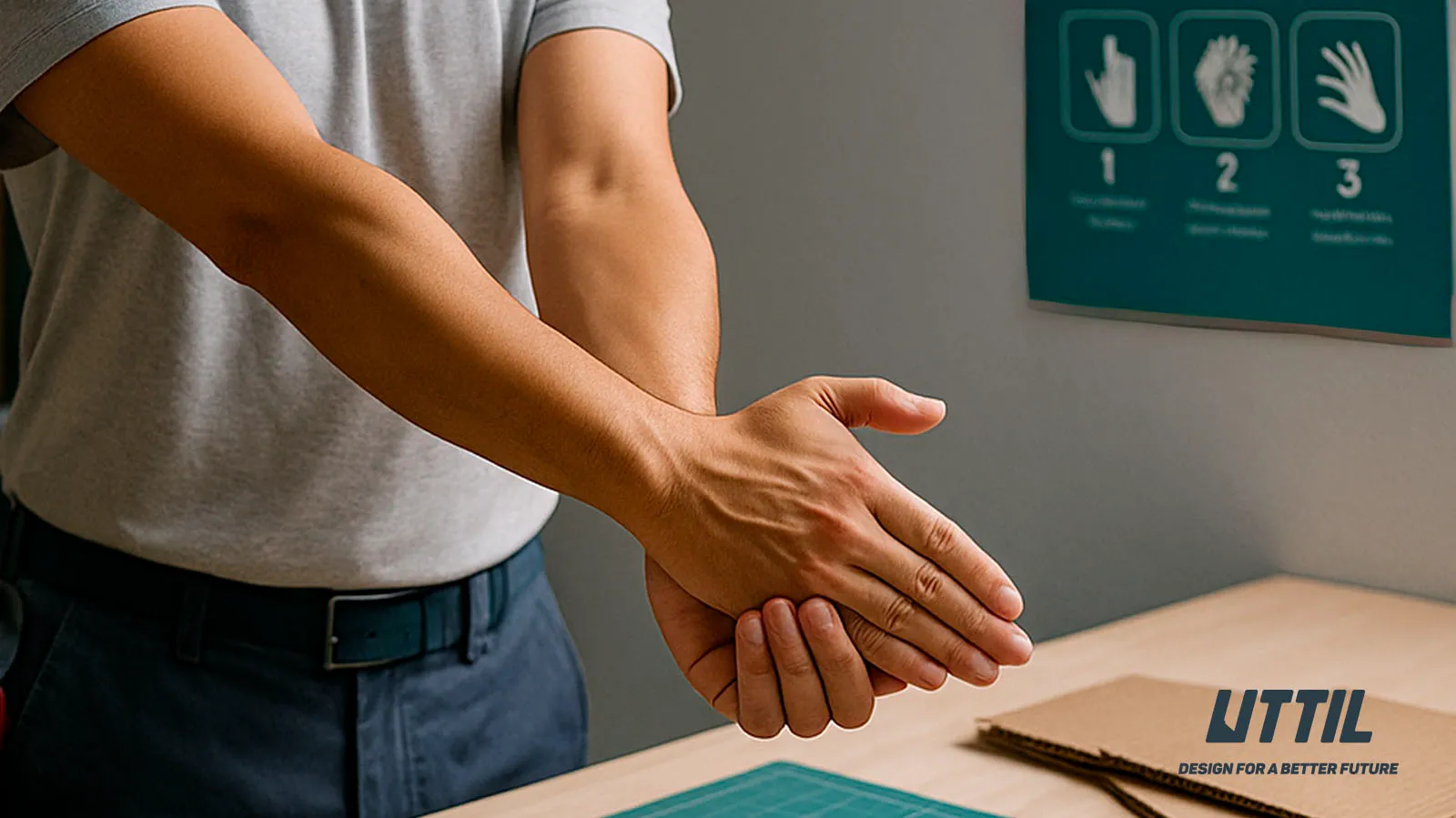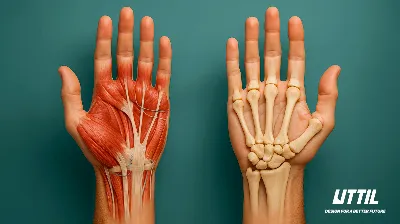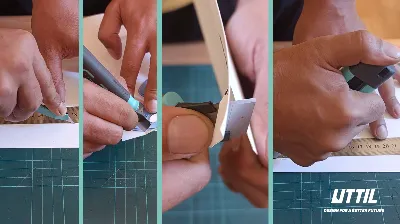Workshop Ergonomics: 3-Minute Hand–Wrist Micro Break Protocol
The key to maintaining performance during
lengthy cutting sessions is to relax the hand–wrist line with short, planned micro
breaks. Research indicates that taking short and frequent breaks can reduce
musculoskeletal complaints and can be implemented without disrupting work.
Furthermore, occupational health authorities recommend a 'short and frequent'
break schedule rather than long breaks.
Warning: If you experience pain, numbness, or
loss of strength, do not force yourself; consult a healthcare professional if
necessary. This content is not a substitute for medical treatment.
How Often?
- Take
a 3-minute micro break approximately every 45 minutes. Short
and frequent breaks are more effective than long and infrequent ones.
3-Minute Micro Break: Step by Step
0:00–0:30 – Breathing + Shoulder Relaxation
- How? Inhale for 4
seconds through your nose, hold for 4 seconds, exhale for 4
seconds (2 rounds). Relax your shoulders by making small circles
forward, upward, and backwards.
- Why? Breathing and
shoulder relaxation release the tension accumulated from a static posture,
resetting the balance of shoulder strength. Short active breaks reduce
fatigue build-up.
0:30–1:10 – Wrist Flexor Stretch (gently
stretching the muscles and tendons on the palm side)
- How? Arm straight;
with your palm facing out, gently pull your fingers back. 20
sec × 2.
- Why? Softens
shortened tissues from repetitive gripping movements and supports the
range of motion. Hand–wrist exercise guides recommend spreading such
gentle stretches throughout the day.
1:10–1:50 – Wrist Extensor Stretch (gently
stretching the muscles and tendons on the back of the hand)
- How? Arm straight;
with the palm facing down, apply light pressure to the back of the hand
(gently push the palms towards the ground). 20 seconds × 2.
- Why? Provides
balance against repeated bending (flexion) during cutting; limits
excessive strain. Clinician guidelines support the combination of
stretching + light activity.
1:50–2:10 – Finger Open–Close (blood flow and
numbness)
- How? Wide open
fingers, make a fist. 10 rhythmic repetitions.
- Why? Short active
movements reduce tension caused by prolonged static holding and promote
fresh blood flow to the gripping muscles.
2:10–2:40 – Thumb Contact Cycle (thumb tip →
other fingertips)
- How? Touch and
release the tip of your thumb to the tips of your index, middle, ring,
and little fingers in sequence, repeating for two rounds.
- Why? It
'recalibrates' fine grasping coordination (pencil/pinching); it is a
simplified equivalent of tendon gliding sequences.
2:40–3:00 – Gentle Wrist Circles (slight
angle, both directions)
- How? Draw small
circles with your wrists in every direction for a total of 20
seconds.
- Why? Restores joint
fluid circulation, sensory feedback, and sense of movement; short active
breaks have been reported to reduce musculoskeletal complaints.
Recognise Signs of Fatigue
- Tendency
to press the blade too hard
- Weakness/trembling in the fingers
- Tingling/numbness, change in heat
sensation
- Frequent
skipping of the line, increased 'fuzziness' on edge cuts
- Burning–tension in the
palm/forearm
These signals indicate that you need to
shorten your break interval and review your equipment/technique.
Small Tips for Application
- Take
breaks with the blades' cutting edges closed/locked.
- Upon
return, replace the segment that has become blunt at the snap-off
tip; for long lines, opt for a screw-locked body (stability), and
for short jobs, choose an automatic lock (speed).
- Using
a timer to remind you of breaks helps maintain consistency and
productivity. Aim for short but frequent intervals.
Sources:
1. Albulescu P.
"Give me a break!" Systematic review & meta-analysis on
short breaks (recovery activities). (2022).
2. Luger T. Work-break
schedules for preventing musculoskeletal disorders. (2019).
Practical/effective use of micro-breaks in the field.
3. HSE – UK. Working
safely with display screen equipment. Guide to short and frequent breaks.
(Updated: 2025).
4. OSHA. Computer
Workstations eTool – Work Process. Short breaks and stretching in
high-repetition tasks.
5. American
Society for Surgery of the Hand (ASSH). Common Hand and Finger
Exercises. Tendon gliding/basic hand exercises.
6. AAOS
OrthoInfo. Therapeutic Exercise Programme for Carpal Tunnel Syndrome.
Stretching examples (for general wrist stretching principles).
7. Wong SW. Ergonomic
interventions to reduce upper limb MSDs. (2024). The effect of multiple
interventions, such as microbreaks + targeted stretching.
8. Stanford
EH&S. Microbreaks. 20–60 second microbreaks and example
applications.








